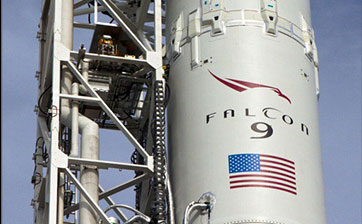
[SatNews] “...They are significant milestones in our effort to return space station resupply activities to the United States and insource the jobs associated with this important work.”
Orbital Sciences Corporation Monday rolled the first stage of its Antares™ rocket to the launch pad of the nation's newest spaceport—the Mid-Atlantic Regional Spaceport at Wallops Island, Virginia. While in Florida, Space Exploration Technologies (SpaceX) moves ahead with preparations for an October 7 launch to the International Space Station for NASA's first Commercial Resupply Services (CRS) mission. These developments mark progress in returning space station resupply missions to American soil.
With rollout of the Antares rocket, Orbital continues toward a series of tests at the launch pad that will lead to a planned flight test later this year. The company also will fly a demonstration mission to the space station to test both the Antares rocket and Cygnus cargo spacecraft in the coming months. The milestones will be completed prior to beginning formal cargo delivery missions to the space station under NASA's CRS agreement.



